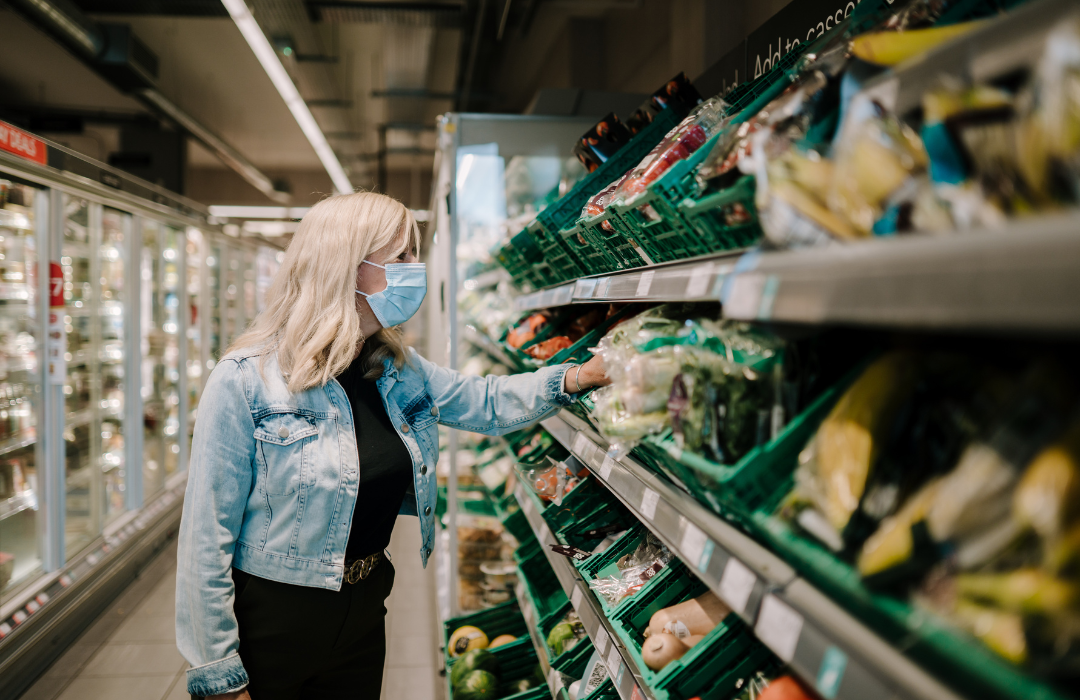
Inflation has moderated some, but grocery shoppers still face high prices
Inflation has moderated some, but grocery shoppers still face high prices
For the last 12 months, Adams Publishing Group's journalists from across the country collected local grocery price data, spoke with American consumers about how they're navigating the high tide of inflation, and heard from economists on when the price pressures might subside.
Each month, reporters tracked prices as they rose and sometimes fell, using the same grocery list and shopping at the same store in 10 communities across the United States. The result is a database of grocery prices, including average item prices and total grocery bills over 12 months.
The grocery list includes items ranging from eggs, butter, and cream cheese to soda, meat, and toilet paper.
Here are some of those stories.
About this report
This project represents a partnership between data-driven newswire Stacker and Adams Publishing Group.
Throughout 2022, journalists at APG took a deep dive into inflation, grocery store prices, and their effects on consumers and communities. Stacker worked with APG to consolidate this data and visualize how inflation impacted grocery prices at large and across each of these communities. Stacker also analyzed the Consumer Price Index from the Bureau of Labor Statistics for broader trends across the U.S.
APG owns and operates more than 130 news titles in 15 states across the United States.
The news organizations directly involved in this special report include the Southern Maryland News, Skagit Valley Herald in Washington state, Wyoming Tribune Eagle, The Daily Times in Tennessee, The Idaho Press, The Athens (Ohio) Messenger, The Leader-Telegram and Watertown Daily Times in Wisconsin, The Charlotte Sun and North Port Sun in Florida and The Daily Reflector in North Carolina.
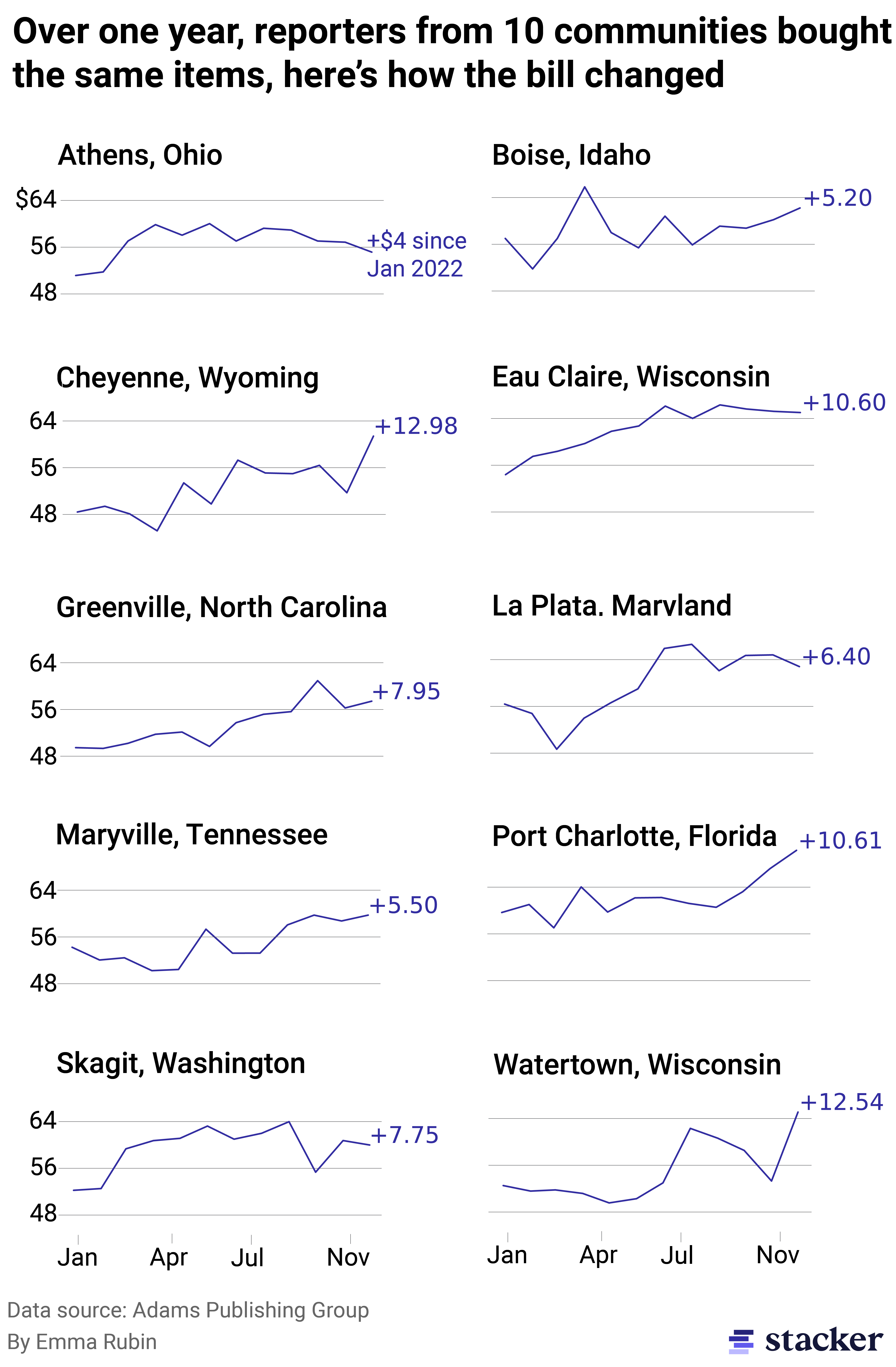
Wistful in Wisconsin
What a difference 12 months makes.
To free up cash for gift shopping this holiday season, Janesville, Wisconsin, resident Ruth Ludens said she had to sell off a gift her husband had given her last Christmas—her Onewheel motorized skateboard.
As Ludens watched dozens of shoppers pass by on the concourse at Uptown Janesville, the main shopping mall in the city of 65,000 people two hours from Chicago, she stood and held the handles of the stroller her toddler daughter was seated in.
Ludens said the past year has brought unemployment and income loss to her family at a time when Americans are seeing unprecedented inflation for common, everyday items. It also brought about a holiday spending crunch for Ludens that she said forced her to be more frugal shopping.
Ludens said she'd never used her electric skateboard much. Selling the $1,500 board made her feel more responsible than wistful.
"It was actually a blessing to have something of some value to sell so that I could afford to pay bills and also have some money for presents," Ludens said. "At this time last year, my husband had a really good job. We were able to actually afford something like that. Turn around this year, it seemed like we'd be better off selling it."
She is not alone.
— Neil Johnson (Janesville Gazette)
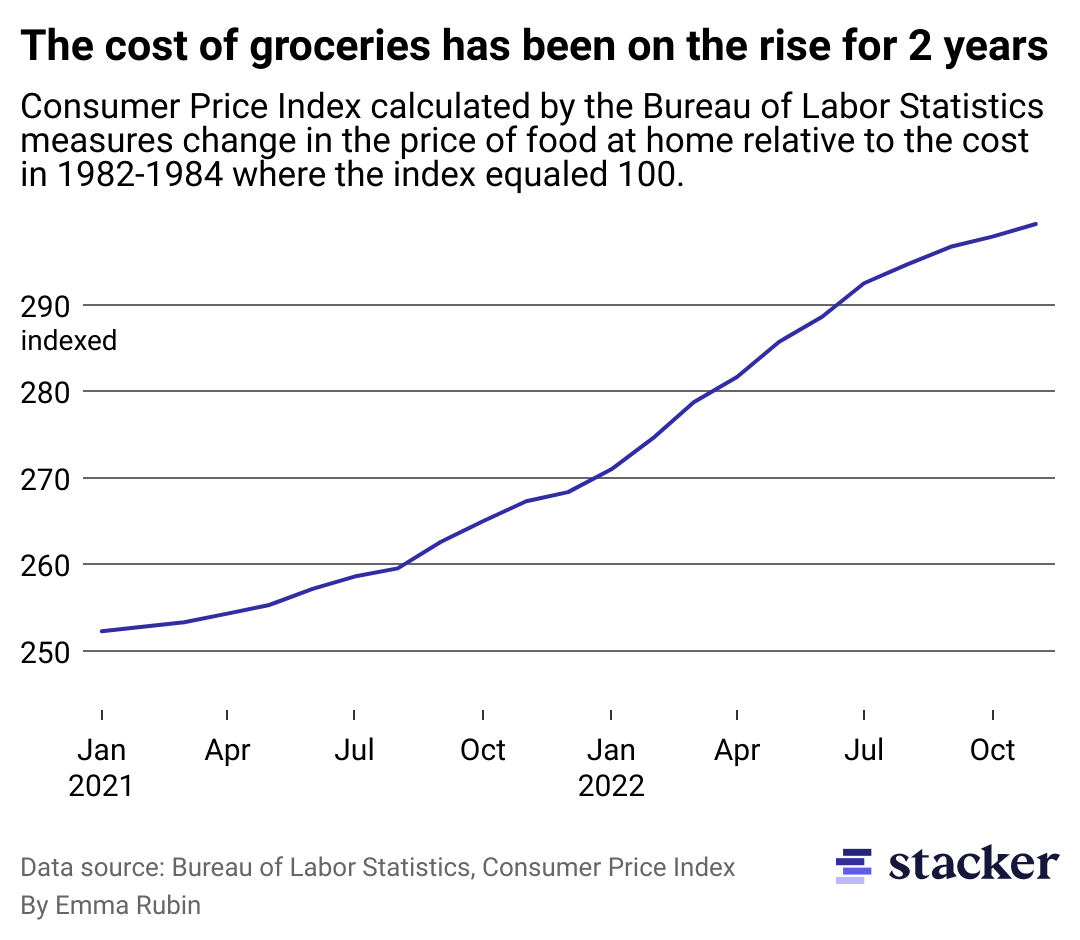
Inflation moderating?
Across the country, consumers and households continue to face high prices even with the U.S. inflation rates moderating some overall.
But how much are prices really easing?
Michael Snipes, an economics professor with the University of South Florida's Sarasota-Manatee campus, said the CPI gauges an average of all prices—so even when overall inflation moderates, consumers could continue to face high prices for numerous items.
"Food is still high. Housing is still high," Snipes said.
Apartment and home rents are up 7.9% versus a year ago.
Grocery prices are still up 12% year-over-year. That includes higher prices for staples and popular items such as bread (up 15.7%), chicken and turkey (up 13.1%), lettuce (up 19.8%), soda (up 12.8%), snacks (up 11.1%), and soup (up 15 %), according to the Bureau of Labor Statistics.
For Ludens and other supermarket shoppers, higher prices for eggs (which have also been driven up by widespread avian flu outbreaks) remain a noticeable challenge.
"Eggs. It's four dollars and thirty cents for eggs," Ludens said when asked about remaining sticker shocks. "They used to be a dollar."
In Greenville, North Carolina, Jason Jackson tells a similar story that could foretell future consumer trends and behaviors. Jackson has become more frugal with his food purchases "because food is the biggest cost I have now."
He also has a lasting memory of the rise in egg prices. "That's the one thing that has surprised me, how can 18 eggs cost $7?" he asked.
He's also changed his shopping habits with inflation's sticker shock in mind. "I changed how frequently I come to the store and the items I buy. I eat a lot less eggs."
— Ariyanna Smith (The Daily Reflector), Neil Johnson (Janesville Gazette). Mike Sunnucks (APG National Enterprise editor)
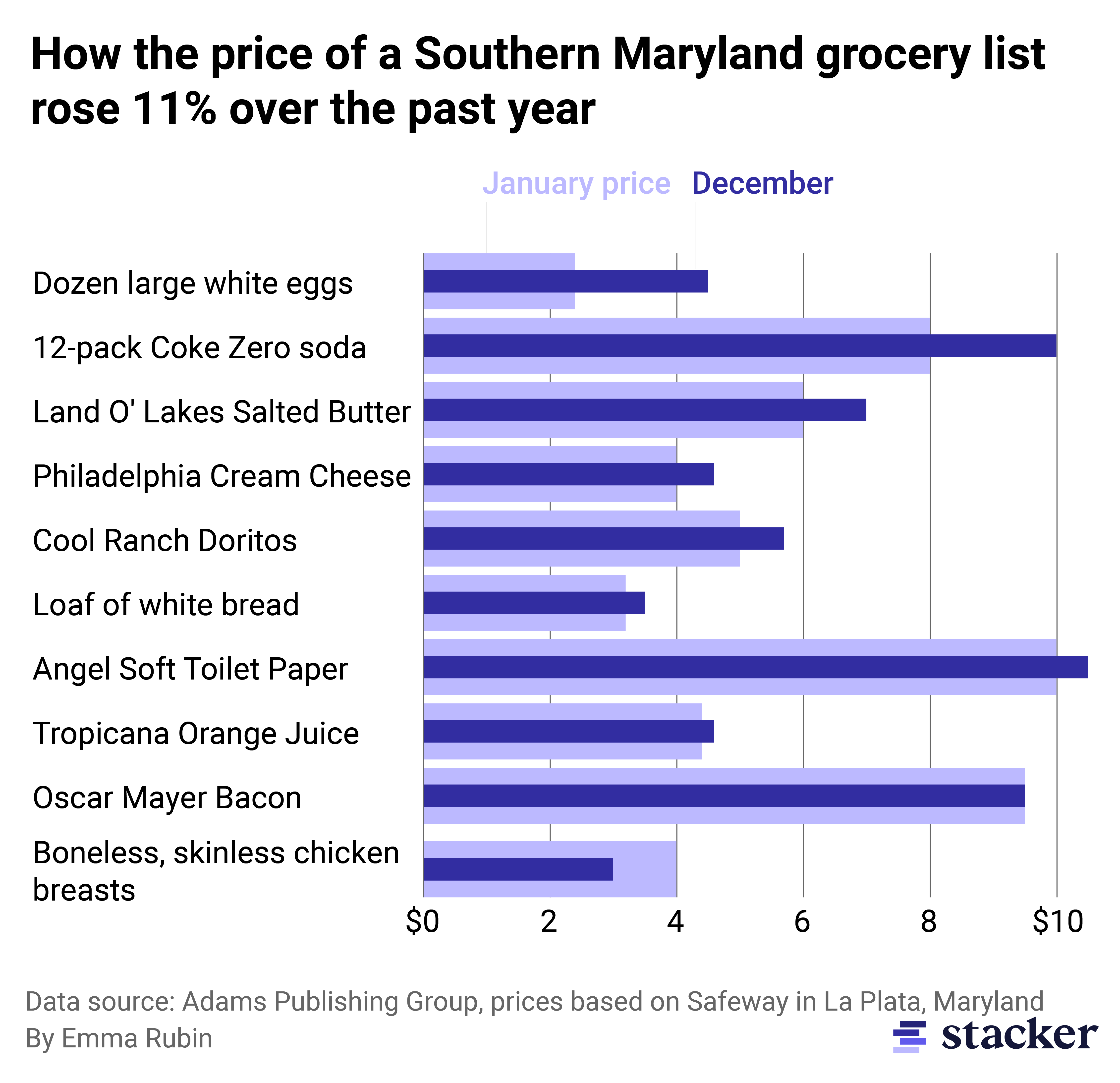
Making ends meet
About an hour southeast of Washington D.C. in southern Maryland, Pascale Small said high prices have put a crimp on what she can afford.
"We're a family of five, and what used to go and be able to stretch out to a family of five now really covers like a family of three, so you make do with what you can," said Small, a native of Waldorf.
One of the most surprising things for her family has been the jump in prices for milk, eggs, and meat, all things that impact the monthly budget.
Milk prices are up 14.7% since November 2021, while meat prices have moderated some with costs coming down in November for some beef roasts and steaks. Ham and hot dogs are up 7.8% and 13.4%, respectively, according to the BLS.
David Anderson, an economist at Texas A&M University, said that beef prices are up compared to historic levels while down from last year, and he's seeing more consumers turn to less expensive meats.
"I think there's evidence that consumers are switching to less expensive items," he said. "For example, maybe buying fewer ribeye cuts and more less-expensive steaks or more ground beef."
To help save funds back in Maryland, Small said her family picked up couponing and paid off their credit cards at the beginning of the year in preparation for the coming surge of prices.
Small also said her family decided against traveling during the summer due to the rising inflation at the grocery store and the gas pump to save up funds for a trip to visit family in Costa Rica during the holiday season.
Small, who has also been active on other community issues such as school safety, hopes to see more urgency from policy leaders in dealing with inflation via the renewal of tax credits such as the child tax credit, which families relied on to bring relief to family budgets.
— Darryl Kinsey Jr. (Southern Maryland News), Mike Sunnucks
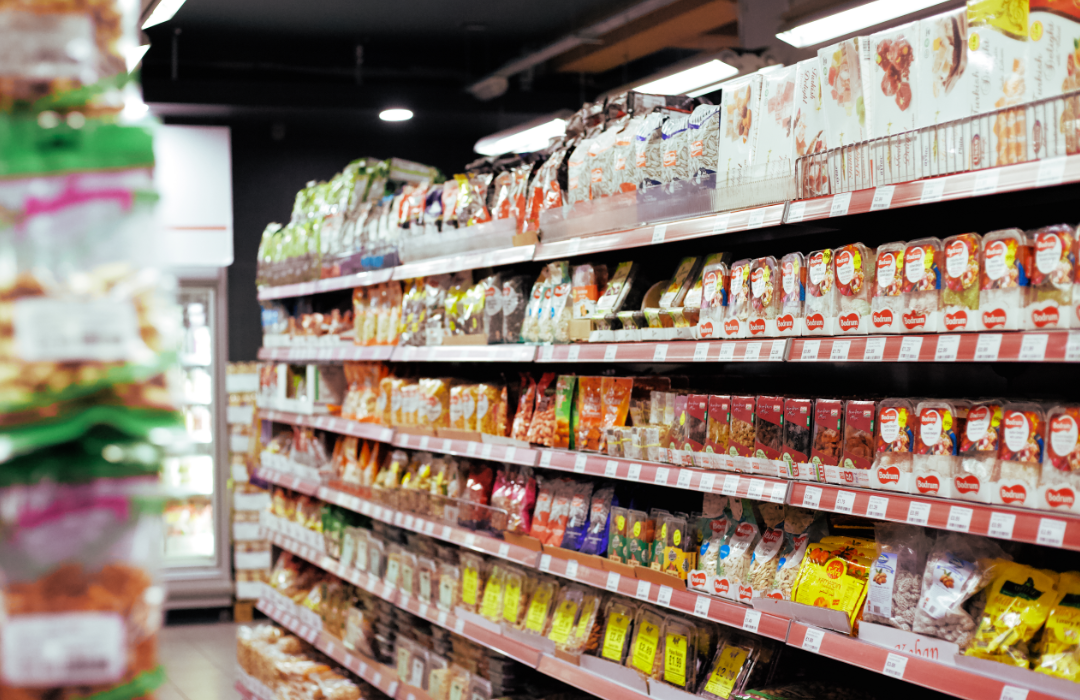
Digging deeper into the 'heat of inflation'
While the inflation rate moderated year-over-year in the CPI, digging into the number can show the rise in prices compared to early stages of and before the coronavirus pandemic.
The CPI—the primary U.S. inflation gauge—is up 16.5% from May 2020, according to the St. Louis Federal Reserve Bank. Inflation is up 15.7% since Nov. 2019, according to the regional bank.
Globally, there are continued inflationary hotspots and areas of concern including Argentina (which has a 92.4% inflation rate), Turkey (84.4%), Poland (17.5%), Bosnia and Herzegovina (17.5%) and Ghana (50.3%), according to research group Trading Economics.
Among industrialized and larger economies, the latest inflation rates stand at 10% in Germany, 5.9% in Brazil, 6.2% in France, 9.9% in the Netherlands, 5.9% in India, and 10.7% in Britain, according to Trading Economics.
Mohammad Ali, a business and accounting professor at the University of Maryland Eastern Shore, expects inflation to ease more in the second half of next year with interest rate hikes from the U.S. Federal Reserve Bank.
"We will continue to experience the heat of inflation, though moderate, until the first half of next year with the remedial steps taken by the Fed," Ali said. "The supply chain is recovering and expected to keep on improving as the Ukraine war situation seems to be dying out to some extent. Overall, the year 2023 is expected to be a better one."
However, Snipes said there is no guarantee grocery chains, retailers, and other businesses will lower prices back to pre-inflationary levels.
"Consumers only have so much say in prices. It's companies that set the price, and consumers decide if they are going to pay for it," Snipes.
Supermarket chains, oil companies, and landlords have all faced scrutiny for whether they are taking advantage of the inflationary wave and raising prices and profits beyond conventional levels.
Snipes cited recent economic contrasts during and after the pandemic, during which time lower-wage workers and lower-income households felt the brunt of COVID-related shutdowns and job losses. He also noted the inflation wave, which contrasted stock market records during the pandemic and monster corporate profits.
Still, Snipes said overall inflation gauges, such as the CPI, are improving, helped by gasoline prices retreating from all-time record highs set in June.
"I saw gas for under $3 for the first time in I don't know how long," he said.
However, fuel oil prices are up 65.7% from a year ago, according to the November CPI.
— Mike Sunnucks
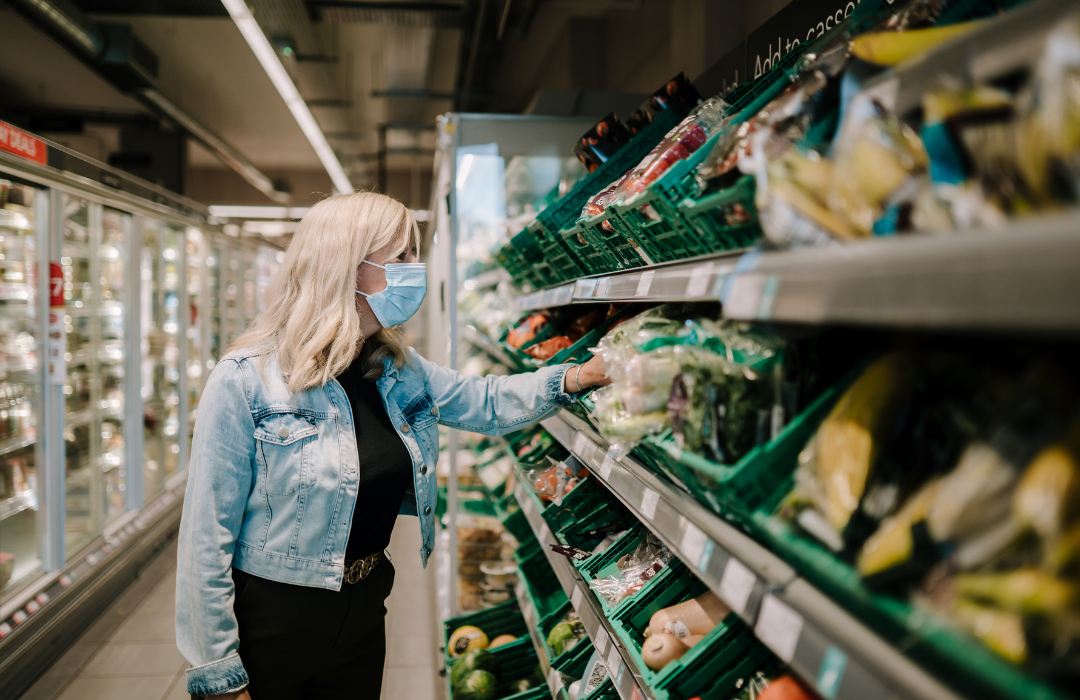
Lessons from Mom
Higher prices and other economic strains have also prompted some creative hacks and DIY solutions throughout the inflation and wave and for the holiday season.
Near the California border in Klamath County, Oregon, Coleen Weeks takes the time to hand-make the gifts she sends out to family and friends.
She's brought that and other lessons from her mother who lived through the Great Depression to navigate inflation rates that have been the highest in 40 years after central banks and governments around the world flooded markets and economies with money during the depths of the coronavirus epidemic.
Weeks carries on the tradition of crafting gifts as opposed to buying them. In her spare time, she crochets and quilts personalized blankets, crafts decorative ornaments and makes jellies and pie fillings from the fruits of her summertime gardening.
"Since my mom was raised in the Great Depression and World War II, they had to grow a garden," Weeks recalled. "They called it a 'victory garden.'"
This year, her own garden provided her with enough to make strawberry, berry and nectarine-jalapeño jellies. She's one of scores of DIY food and herb growers, dog- and cat-food makers, and aspiring farmers who popped up during the pandemic and inflation wave. Weeks's thrifty ways are not limited to just her gifting practices, though. She also is a highly skilled bargain hunter, with an expertise in couponing.
"You've got to download the apps," Weeks said. "Freddy's [Fred Meyers], Albertsons, whatever your local store is. They always put the ad in on Wednesday and preview on Tuesday."
Weeks said that the store apps provide digital coupons that can be "clipped" and added directly to customers' accounts. "Mom's theory was, always cut the coupons," Weeks said. "Save them. Don't just go buy those things right away."
With this practice, Weeks's last grocery visit only cost her $43.08, with a savings of $73. Each week, the savings-savvy Weeks said she sets aside at least an hour to configure her shopping list.
"Make a list of what you need. Check for sales. Check prices at different stores," Weeks explained. "Sometimes I save as much as 60%."
Weeks added that the day of the week can make a marked difference in savings each month. Shopping on Fridays at Fred Meyers, she said, earns customers double the usual points, which are used to reduce gas prices when purchased at the store.
"Every seven days, like clockwork, I take my receipt and fill out the 'Tell us how we're doing' survey. That gives yoU 50 extra points towards gas," Weeks said. "If you do this every seven days, that guarantees you 20 cents off."
— Molly O'Brien (Klamath Falls Herald & News)
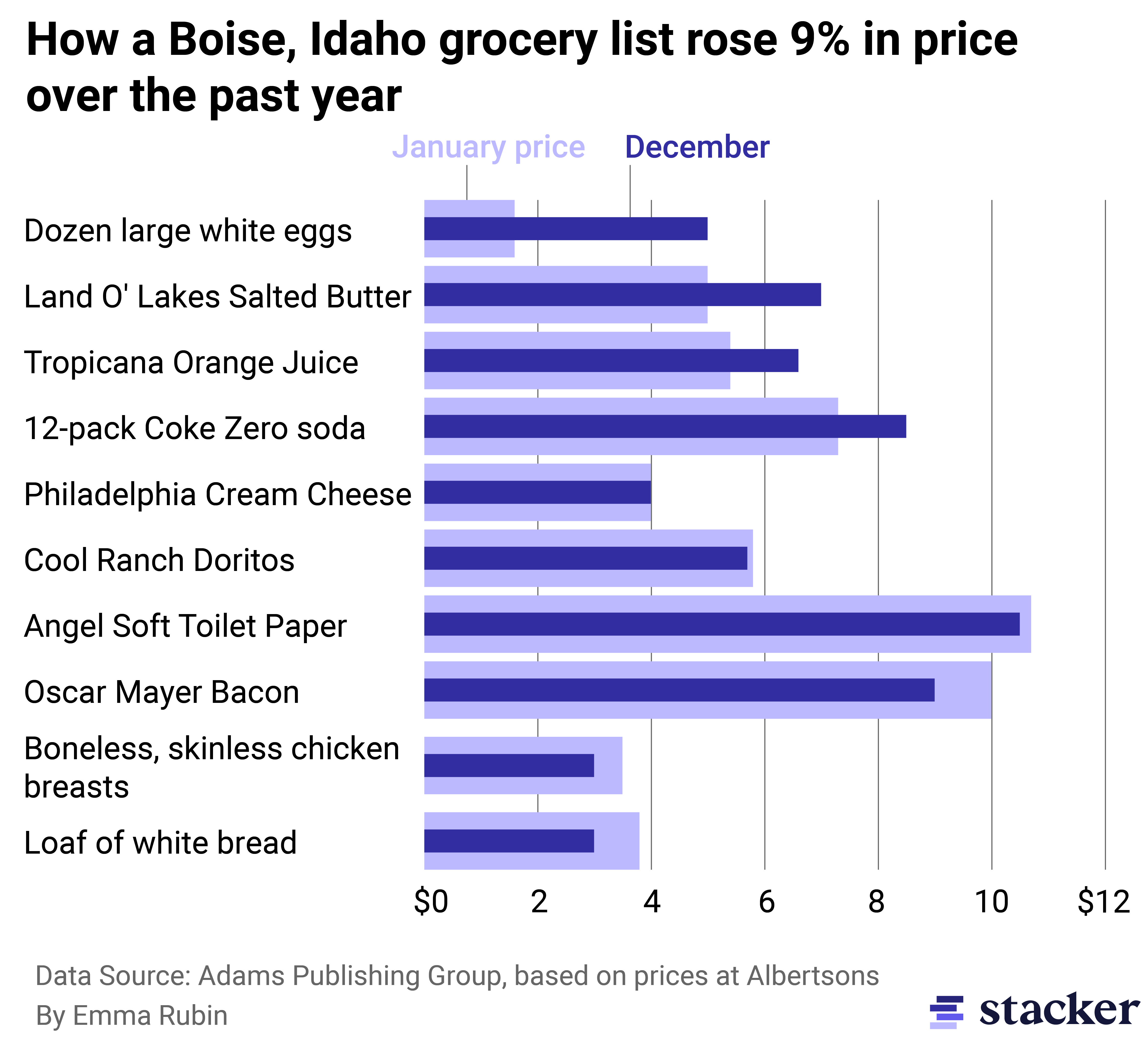
Still seeing high prices
Other consumers across the country also continue to navigate higher food and other prices, with some creating potentially lasting consumer trends.
At the Boise Towne Square Mall in Idaho, Sterling and Renee Johnson said they spent more on gifts this past holiday season, especially for their grandchildren, to keep up with inflation.
The couple from Star, Idaho, has been married 56 years and has yet to see prices ease substantially at grocery stores.
"We're surprised that the groceries are costing so much more when you check out," Renee Johnson said. "Our bill is quite a bit higher than what it used to be for hardly any groceries," adding that they really don't buy expensive foods.
"We've directed more of our shopping to places like WinCo and Costco where the value is," Sterling Johnson said. Those chains, along with the likes of Aldi, Save-A-Lot, and Smart & Final, offer cheaper prices than other supermarkets.
Anne Alexander, vice provost and an economist at the University of Wyoming, said supply chain problems from the pandemic, labor shortage, and Chinese COVID-19 shutdown have "really cleared up."
She said while inflation has moderated some, prices are still high for some essentials.
"While gas and energy prices (except fuel oil) have really eased up, groceries and housing continue to be impacted significantly by inflationary pressures," Alexander said, pointing to high prices for produce, cereals and bakery products, and alcohol. "Here in Wyoming, we're still feeling the impacts of the bird flu culling, as eggs are sometimes more difficult to come by, but it has eased in the past couple weeks."
So, what's next?
Alexander sees inflation in Europe, the war in Ukraine, and severe weather events continuing to put some upward pressure on U.S. prices and continued interest rate hikes putting downward pressure on the economy.
"The economy will likely experience a recession, but probably not a severe one," she said.
— Erin Banks Rusby (Idaho Press), Mike Sunnucks



